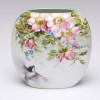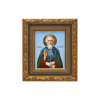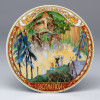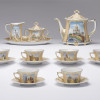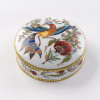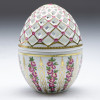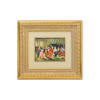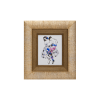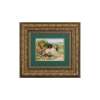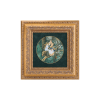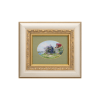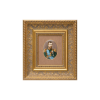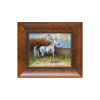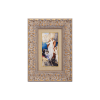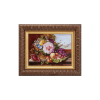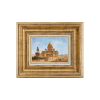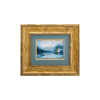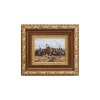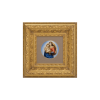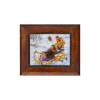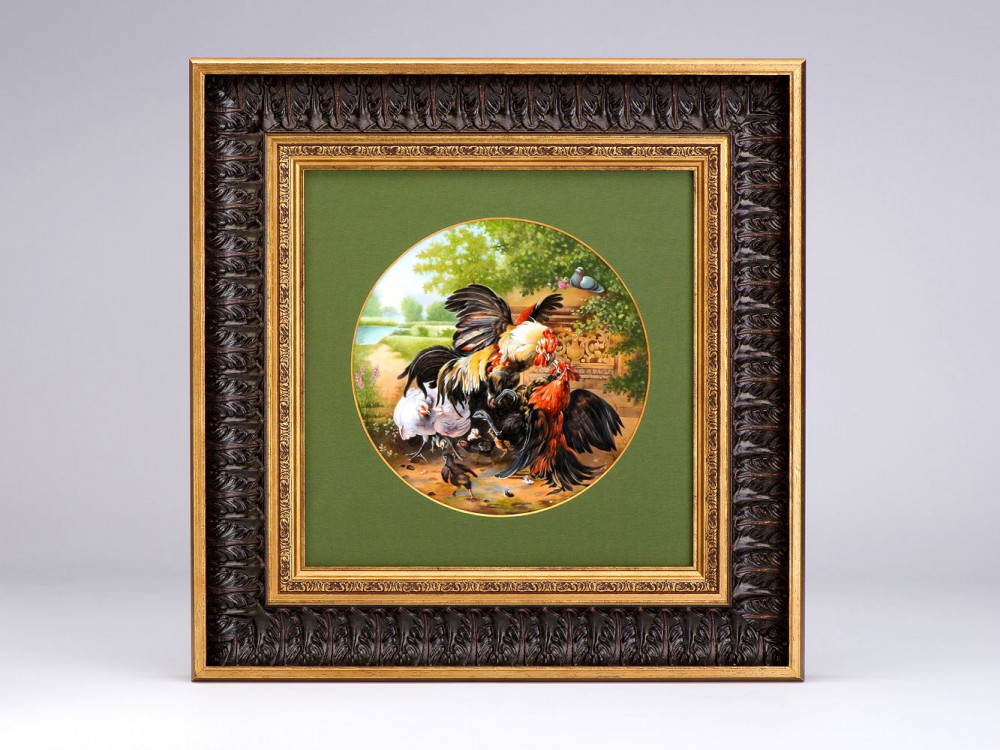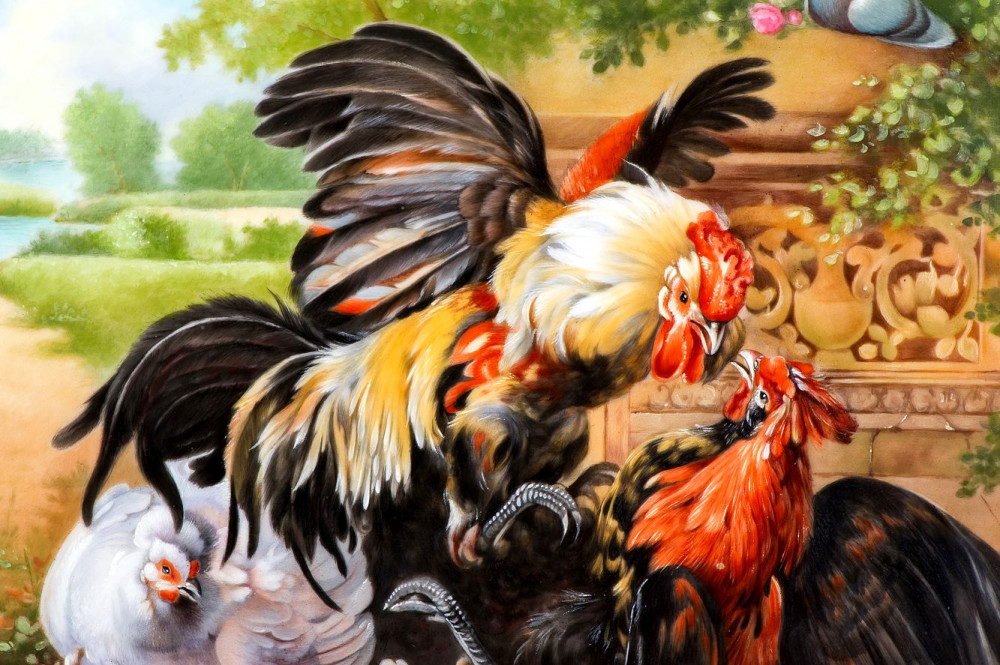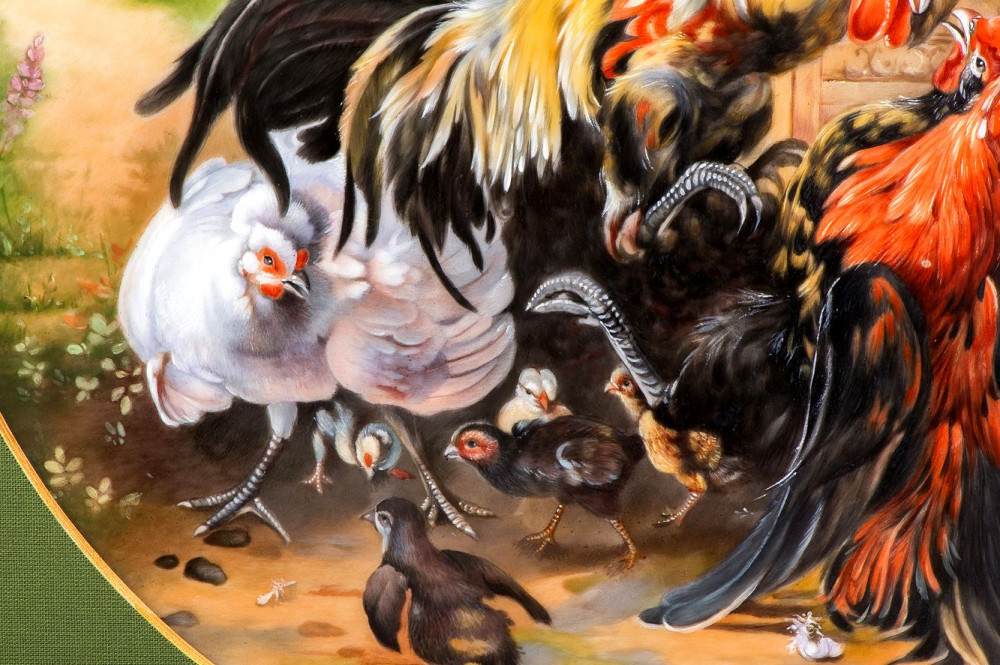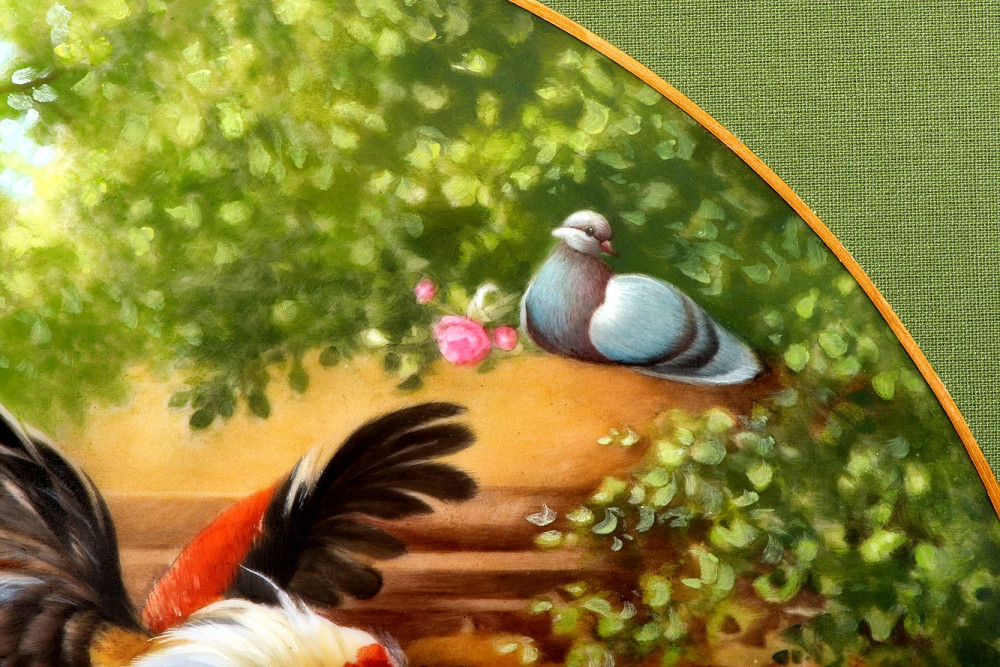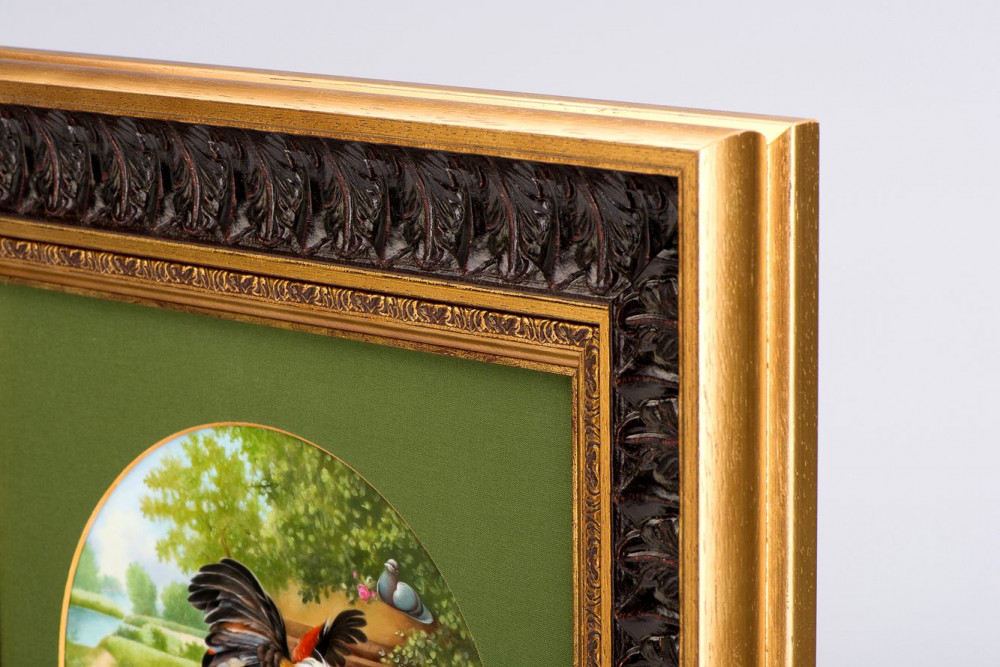You are here
Cocks Fighting
On the back of the panel is the “АФМ” trademark brand and a handwritten inscription in dark pigment: “Andreyevskaya Porcelain Manufactory. The painting is based on the painting “Cocks Fighting” by Melchior d’Hondecoeter. Painted on porcelain by Natalia Druzhinina, St. Petersburg. 2019”.
The painting was created at the Andreyevskaya Porcelain Manufactory (APM) by the porcelain artist N. Druzhinina based on the painting by Melchior d’Hondecoeter (1636–1695), the famous Dutch animal painter, a prominent representative of the Dutch still life genre of the 17th century.
The Dutch artist used large-sized canvases to depict animals and birds and create compositions that were striking in their decorativeness, accuracy in conveying nature, and the brightness of the palette, for which his contemporaries called him the “Rafael of Birds”. The life in poultry yards in moments of peace and anxiety, landscapes with birds and domestic animals, these are the stories in his paintings that attest that the artist carefully studied both the appearance and the moods and habits of animals. The best works by M. d’Hondecoeter often have an allegorical and moralizing subtext; they are distinguished by their baroque whimsical compositional solutions and decorativeness. The artist’s works are displayed in many collections of major museums around the world and are highly appreciated by connoisseurs of painting.
Expertise in porcelain painting enabled N. Druzhinina, a talented APM artist, to preserve the qualitites of M. d’Hondecoeter’s original canvas when transferring the composition to a porcelain panel in the tondo (circle) format.
The peace of a poultry yard inhabited by different species of birds, is broken by the skirmish of two quarrelsome handsome roosters. The scene of the birds’ commotion is captured by the animal artist in the dynamics and combinations of bright colors. The peaceful inhabitants of the courtyard, scattering in fright, were realistically conveyed, with an exceptional accuracy of characteristic movements and habits, in a dramatic moment of the active cockfight. The colorful plumage and light, scattered feathers were painted naturalistically and texturally.
Unlike the palette of the picturesque original that has faded over time, the APM artist achieved a more decorative effect as she “transferred” the action of the painting to the open air, to a park landscape, and used bright saturated colors. The painting is completed with smooth transitions and overtones. The color is fresh, cheerful and rich in shades.
Historically, the tradition of reproducing on porcelain paintings by famous artists goes back to the 19th century, the heyday of the porcelain industries in Europe and Russia. By the time, artists had achieved high levels of skill and would recreate for the aristocracy paintings on porcelain panels inspired by famous works of art, at the Imperial Porcelain Factory of the Russian Empire, at the Royal Porcelain Manufactory in Berlin and at Sèvres Porcelain Manufactory in France. Expensive porcelain paintings were regarded as a luxury, they were painted to order and framed in gilded frames; they decorated palace interiors and were presented as gifts.
Experts acknowledge that the technology of painting on porcelain is particularly complex, since it involves changes in pigment color through heat during firing. The process of creating a work on porcelain may take several months, and high levels of detail in the painting and the unique color scheme can only be ensured by the master meticulously following the technological process.
Before commencing work, the artist compiles a technological chart for mixing pigments; trial colors are completed and a palette of shades is prepared. The painting is created by applying layer-upon-layer of colored glazes, with many layers of detailed brush strokes, each of which must be fixed in the firing process. In addition, there is a specific temperature treatment scale for each pigment. The technological process of creating the jewelry box included 6 firings at 730 to 820°C.
The porcelain panel of a genre scene based on the painting by M. d’Hondecoeter demonstrates the high levels of technological and artistic skills achieved at the Andreyevskaya Porcelain Manufactory, and the company’s commitment to reviving the lost historical traditions of porcelain art.
The panel was produced as a single copy; it is mounted in a modern gilded frame.
